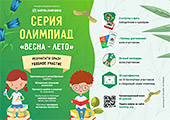| Long term plan module: Pets and wild animals | School: 9 | ||||||
| Date: | Teacher’s name: Zeilbekova M | ||||||
| Class:1 | Number of present | Absent:- | |||||
| Learning objective(s) that this lesson is contributing to: | 1.L3 recognize with support common names and names of places; recognize the spoken form of a limited range of everyday and classroom words 1.S3 pronounce familiar words and expressions intelligibly 1.UE14 use basic prepositions of location and position e.g. in, at, next to, near, on, to describe where people and things are; use basic prepositions of time: on, to talk about days | ||||||
| Lesson objectives: | All learners will be able to: understand the dialogue, by listening to it. | ||||||
| Most learners will be able to: usepreposition of place: on and there is in their sentences. | |||||||
| Some learners will be able to: -make correct 2-3 statements related to the topic. -ask and answers the questions clearly. | |||||||
| Language objectives: | Learners can: By the end of the lesson learners will be able to -name pets and wild animals; - understand the dialogue, by listening to it; -use preposition of place: on and there is in their sentences. | ||||||
| Key words and phrases:There is Preposition of place on Oh, look at all the pets! There’s a parrot on TV. Where is the …? It is ….. | |||||||
| Useful classroom language for dialogue/writing: oral | |||||||
| Discussion points: | |||||||
| Can you say why more people are afraid of wild animals? | |||||||
| Writing prompts: | |||||||
| Assessment for Teaching | Criteria based assessment Assessment criteria: Talk about pets and wild animals using preposition of place on Descriptor: A learner names pets and wild animals appropriately; make correct 2-3 statements related to the topic asks and answers the questions clearly. Technique of FA: Voice prompts | ||||||
| How to overcome barriers in learning English | -Challenge and extend learners through carefully scaffolding assignments and activities -Encourage learners to exchange opinions and views in small groups -Use English in class -Be kind, patient to them -Smile | ||||||
| Previous learning | Lesson №28 Colours and size | ||||||
| Plan | |||||||
| Planned timing
| Planned activities (replace the notes below with your planned activities) What will the pupils learn? How will they learn it? Suggested Teaching Activities Active Learning activities | Resources | |||||
| Start (Beginning of the lesson)
| Greeting: Teacher greets learners; learners respond to greeting and take their places.Dividing into subgroups:Teacher divides the learners into small groups using numbers. Warming up: Odd one word out a)blue b) banana c) green d) white Revising the previous lesson:Colours and size What colour is the hare? It is …. Is it big or little? What colour is the parrot? It is ….. | number cards
worksheet | |||||
| Middle (of the lesson)
| D) Teacher demonstrates tortoise, parrot, spiderusing projected visual images. Teacher models: e.g. There is a green tortoise. D) Teacher demonstrates and drills basic prepositions of place: on using visuals at board I) Learners are given a worksheet with pictures (toys on the table, on the desk …. ). They have to tick the correct option of two according to teacher’s descriptions. e.g. There is a parrot on the bed. G) Learners in the first group take the roles of tortoise, parrot, spider and show where they are. Other group says in English using there is: There is a tortoise on the chair. There is a spider on the table.
W)P) Learners listen to the dialogue very attentively. Then role play with the help of teacher. W) Listening to and singing along with the song. Teacher pre-teaches any unknown animals in the version of the song. Learners dance to music. | Let’s sing a song! song, grammar cards, phonic cards, worksheet, puppets/toys, game, CD, DVD discs, notebook, Student’s book1, Activity Book 1
| |||||
| End (of the lesson) | Reflection: Self-assessment: Traffic lights Learners make comments about the lesson orally. Teacher asks learners to look at lesson objectives they set at the beginning of the lesson and think and say what they did well in the lesson and what needs improvement. |
| |||||
| Additional information: | |||||||
| Differentiation - how do you plan to give more support? How do you plan to challenge the more able learners? | Assessment - how are you planning to check learners’ learning? | Cross – curricular links health and safety check ICT links Values links | |||||
|
|
|
| |||||
| Reflection
Were the lesson objectives / learning objectives realistic? What did the learners learn today? What was the learning atmosphere like? Did my planned differentiation work well? Did I stick to timings? What changes did I make from my plan and why? | Use the space below to reflect on your lesson. Answer the most relevant questions from the books on the left about your lesson.
| ||||||
| Summary evaluation What two things went really well (consider both teaching and learning)? 1. 2. What two things would have improved the lessons (consider both teachings and learning)? 1. 2. What have learned from his lesson about this lesson about the class or individuals that will inform my next lesson? | |||||||










